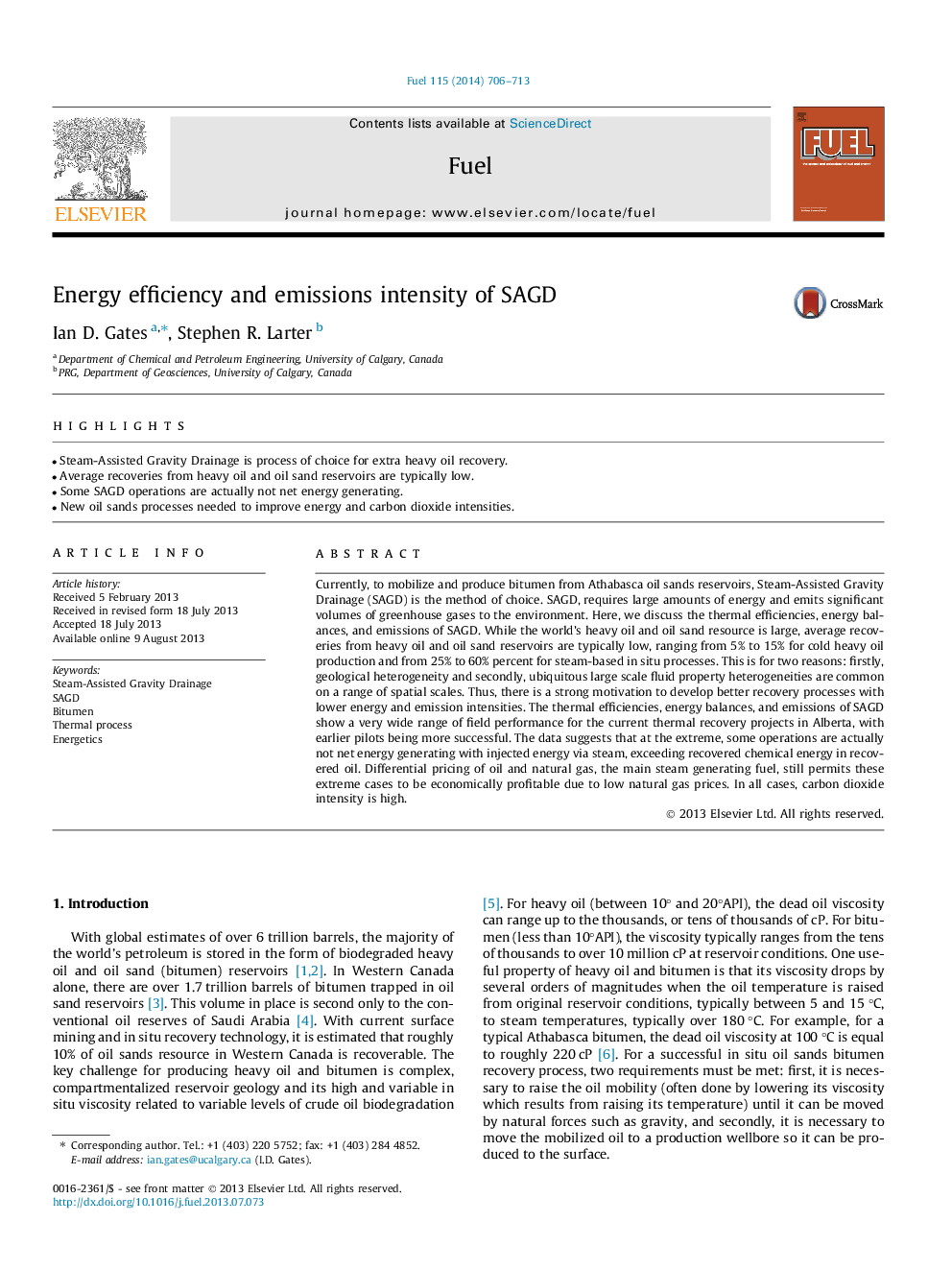| کد مقاله | کد نشریه | سال انتشار | مقاله انگلیسی | نسخه تمام متن |
|---|---|---|---|---|
| 6639579 | 461155 | 2014 | 8 صفحه PDF | دانلود رایگان |
عنوان انگلیسی مقاله ISI
Energy efficiency and emissions intensity of SAGD
دانلود مقاله + سفارش ترجمه
دانلود مقاله ISI انگلیسی
رایگان برای ایرانیان
کلمات کلیدی
موضوعات مرتبط
مهندسی و علوم پایه
مهندسی شیمی
مهندسی شیمی (عمومی)
پیش نمایش صفحه اول مقاله

چکیده انگلیسی
Currently, to mobilize and produce bitumen from Athabasca oil sands reservoirs, Steam-Assisted Gravity Drainage (SAGD) is the method of choice. SAGD, requires large amounts of energy and emits significant volumes of greenhouse gases to the environment. Here, we discuss the thermal efficiencies, energy balances, and emissions of SAGD. While the world's heavy oil and oil sand resource is large, average recoveries from heavy oil and oil sand reservoirs are typically low, ranging from 5% to 15% for cold heavy oil production and from 25% to 60% percent for steam-based in situ processes. This is for two reasons: firstly, geological heterogeneity and secondly, ubiquitous large scale fluid property heterogeneities are common on a range of spatial scales. Thus, there is a strong motivation to develop better recovery processes with lower energy and emission intensities. The thermal efficiencies, energy balances, and emissions of SAGD show a very wide range of field performance for the current thermal recovery projects in Alberta, with earlier pilots being more successful. The data suggests that at the extreme, some operations are actually not net energy generating with injected energy via steam, exceeding recovered chemical energy in recovered oil. Differential pricing of oil and natural gas, the main steam generating fuel, still permits these extreme cases to be economically profitable due to low natural gas prices. In all cases, carbon dioxide intensity is high.
ناشر
Database: Elsevier - ScienceDirect (ساینس دایرکت)
Journal: Fuel - Volume 115, January 2014, Pages 706-713
Journal: Fuel - Volume 115, January 2014, Pages 706-713
نویسندگان
Ian D. Gates, Stephen R. Larter,